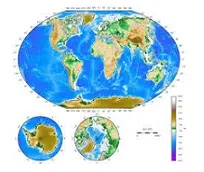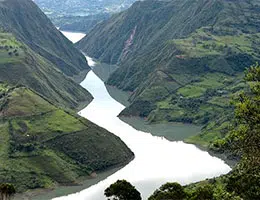 The science that is dedicated to describing the characteristics of our planet is called geography , a term derived from the Latin geographĭa which, in turn, has its etymological root in the Greek word geōgraphía .
The science that is dedicated to describing the characteristics of our planet is called geography , a term derived from the Latin geographĭa which, in turn, has its etymological root in the Greek word geōgraphía .
There are various branches of geography , arising from its specific field of action . Physical geography is that focused on the study of the configuration of terrestrial spaces and seas .
Also called physiography , physical geography specializes in natural geographic space , considering the Earth 's surface as a whole. Their knowledge is complemented by that provided by human geography (which studies the link between human communities and the environment in which they reside).
Physical geography seeks to contribute to the understanding of the geographic processes and patterns that occur in the natural environment. Oceanography , orography , glaciology and hydrography are some of the fields of study of this geographical subdiscipline. To develop his studies, he turns to other sciences , such as physics and geology .
Below we will look at the aforementioned fields of study in greater detail. Oceanography , for example, is nothing other than the study of seas and oceans, with a focus on their physical, hydrological, economic and biological features. This science is also interested in tides, ocean currents and waves, among other movements of ocean waters. Another of the main aspects of oceanography is the way in which seas and oceans influence the hydrological cycle and atmospheric dynamics , which is the foundation of meteorology and, indirectly, of climatology.
Orography , on the other hand, is defined as the elevations found in a given area, and also as their description from the field of geomorphology . Specialists in this field define the lower limit of the parts of the Earth where the ocean does not reach. The fidelity to reality of the representation of the terrain depends directly on the resolution used when dividing them into cells.
Regarding glaciology , it contributes to physical geography with its study of water in a solid state: polar caps, glaciers, ice shelves and icebergs are some of the most common examples. The phenomena that this discipline addresses belong to both the present and the past, and cover both their development and their causes, their distribution and their extension.
 Hydrography is easily differentiated from glaciology in that it deals with waters in a liquid state, and this includes lakes, rivers and groundwater, as well as their characteristics and properties.
Hydrography is easily differentiated from glaciology in that it deals with waters in a liquid state, and this includes lakes, rivers and groundwater, as well as their characteristics and properties.
It is important to keep in mind that physical geography studies biophysical issues and the link between these and human actions. That is why it works with the natural phenomena that occur on Earth and with the interactions that man maintains with the environment, always starting from a spatial perspective.
Although it can develop historical studies (for example, analyzing how the landscape changes over thousands of years), it also has the ability to focus on the present (detecting and measuring changes in land use, to name one possibility).
The main applications of physical geography take place through the subjects that compose it and can take many forms, depending on the characteristics and needs of each area. Its origins date back to the 3rd century BC. C., although its evolution had a large number of milestones throughout these two millennia.
